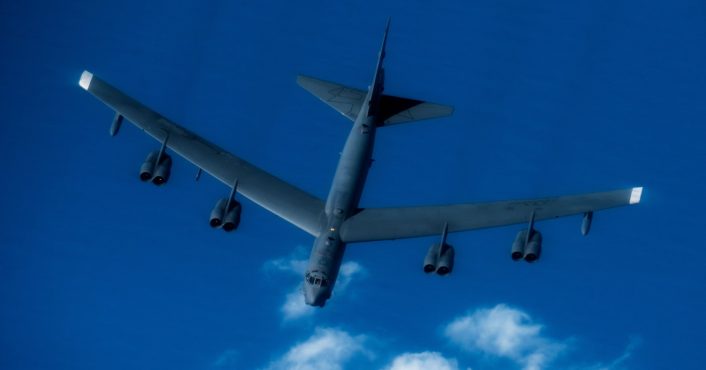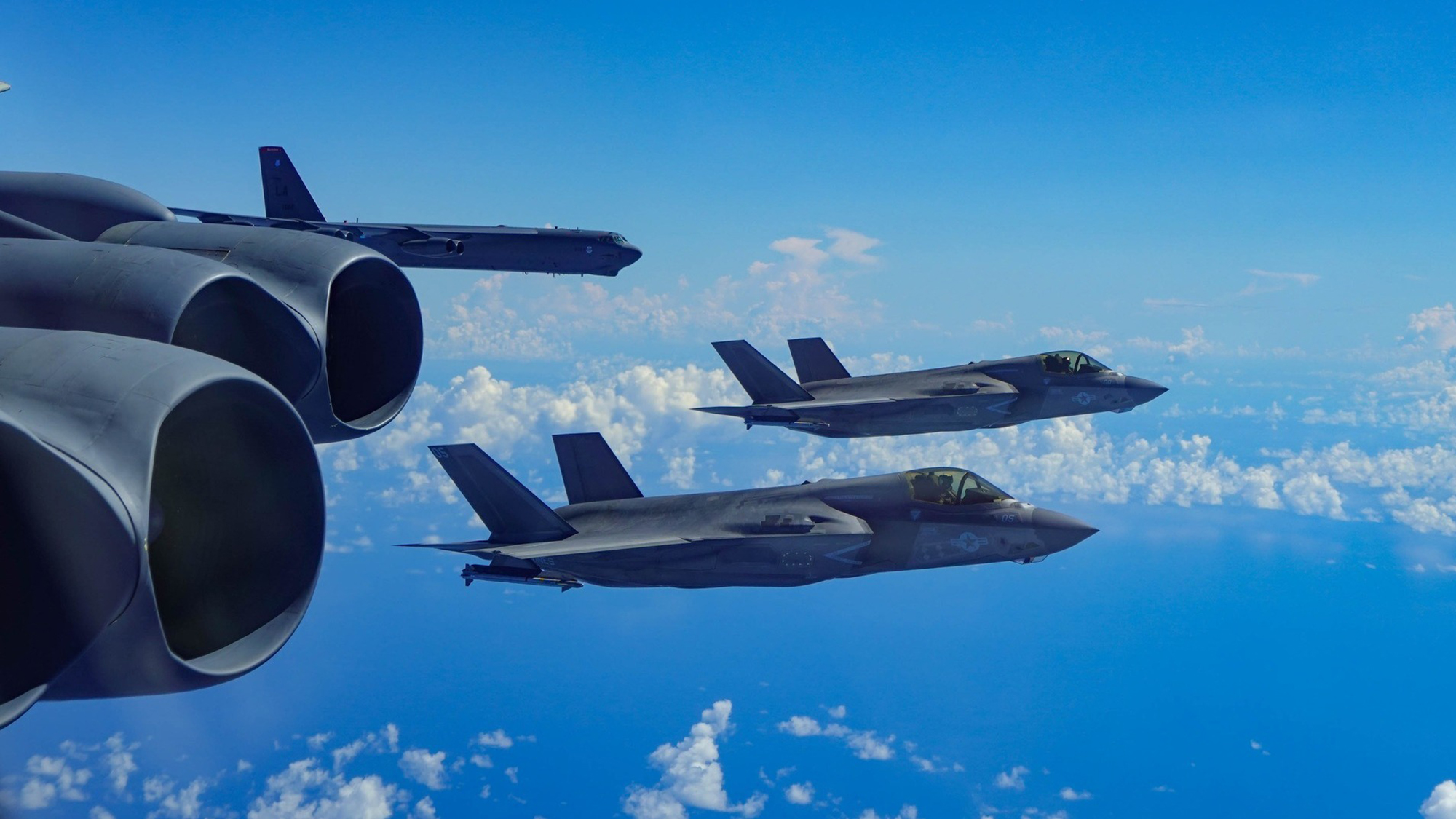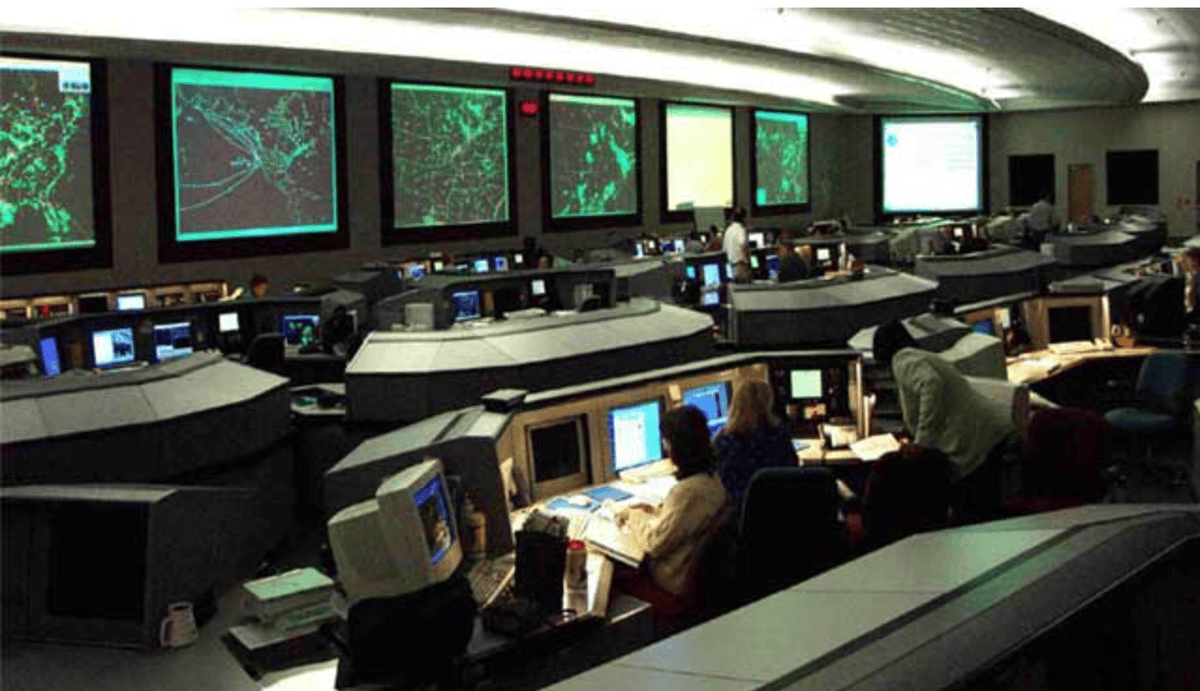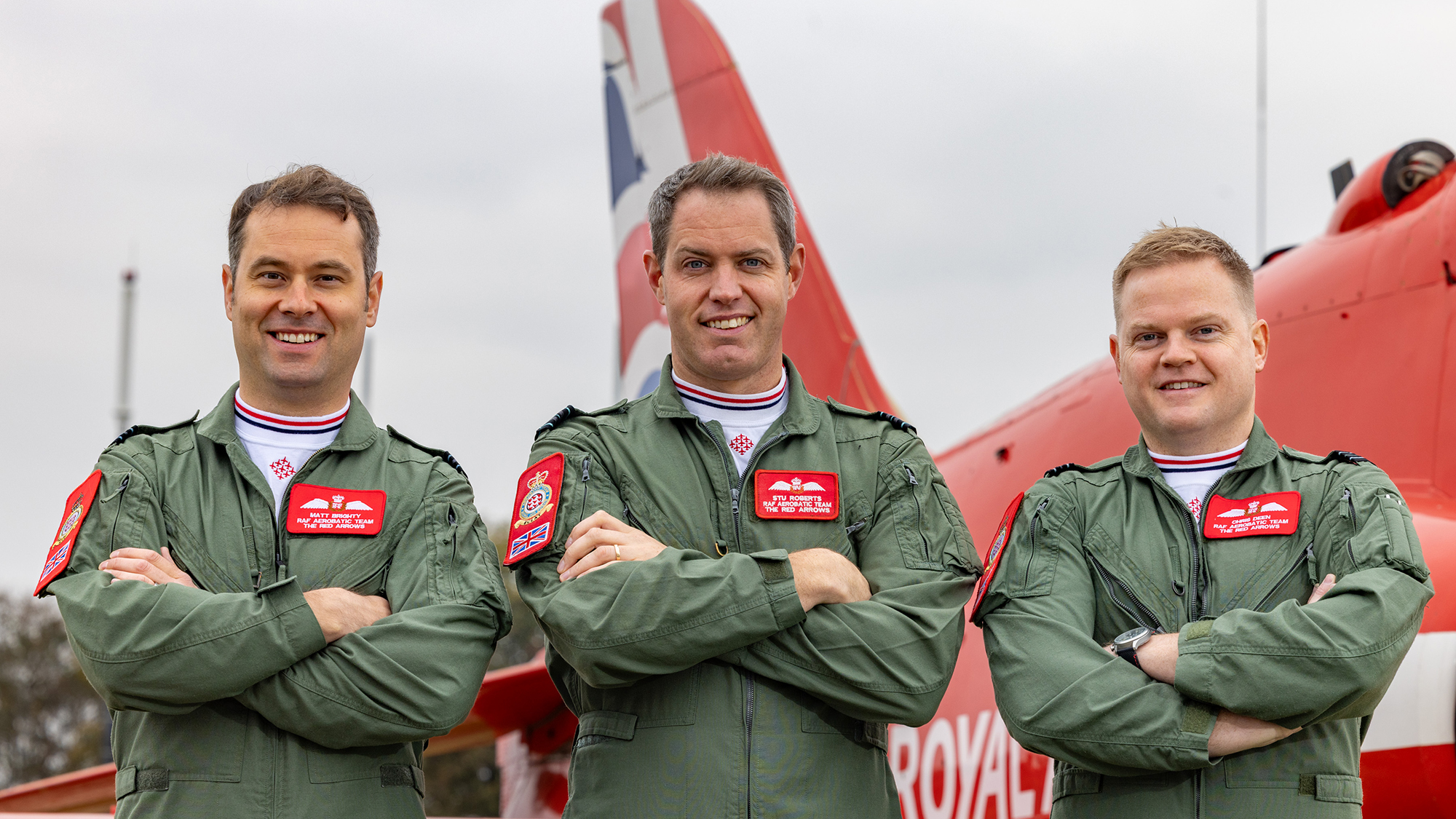U.S. Marine Corps F-35Bs, armed with active AIM-9X air-to-air missiles, escorted the B-52s during a bomber strike demonstration mission earlier this week.
U.S. Air Forces Southern just released a new set of photos showing U.S. Marine Corps F-35B Lightning II aircraft escorting a pair of B-52H Stratofortress bombers during a long-range mission off the coast of Venezuela. October 15, 2025.
“U.S. Air Force B-52H Stratofortress long-range strategic bombers from Barksdale Air Force Base, Louisiana, conducted a bomber strike demonstration mission Oct. 15, 2025, in the U.S. Southern Command (SOUTHCOM) area of responsibility, demonstrating U.S. commitment to “proactively deter adversary threats to the U.S. homeland and region, enhance aircrew training, and ensure global force readiness necessary to respond to any contingency or challenge,” AFSOUTH says in a Facebook post.
According to publicly available flight tracking data, three B-52s from Barksdale Air Force Base, Louisiana, flying as BUNNY 01, BUNNY 02, and BUNNY 03, operated for hours within the Maiquetía Flight Information Region, off the northern coast of Venezuela, before returning north.
3 B-52s seen flying between Mexico and Cuba. pic.twitter.com/pb5rpNjn7g
— Faytuks Network (@FaytuksNetwork) October 15, 2025
BUNNY Flight 01 (x 3 B-52) wkg Merida Center entering the Caribbean Sea this morning after departing Barksdale AFB 🧐
Audio via @liveatc and tracking through @vueloradar24 pic.twitter.com/bqKbG4hnAj
– Thenewrea51 (@thenewrea51) October 15, 2025
BIG: Two American B-52H bombers (BUNNY01 and BUNNY02) flew between 100 and 240 miles from Caracas today, flying over the southern Caribbean for several hours before returning to the United States.
The flight remained in international airspace but caused alarm in Venezuela.
Venezuelan military… pic.twitter.com/V0Mk8wglna
– Clash Report (@clashreport) October 15, 2025
The images confirm that at least two bombers were escorted by Marine F-35Bs operating from the former Roosevelt Roads Naval Station in Ceiba, Puerto Rico, where fifth-generation aircraft have been deployed since September 13, 2025.

Interestingly, the F-35Bs depicted in the photographs flew with AIM-9X missiles on the external pylons under the wings. Reports from local observers suggest that at least one Venezuelan Air Force F-16 took off from El Libertador Air Base, west of Caracas, while the B-52s orbited offshore. However, there is no confirmation of any interception attempt.
‼️🇺🇸🇻🇪In response to the B-52s flying near La Orchila, it was reported that the Venezuelan F-16s left the El Libertador Air Base in Aragua.
But can they really hold their own against American airpower? pic.twitter.com/GKQc4Wh8Mk
— Defense Intelligence (@DI313_) October 15, 2025
Another interesting detail visible in the newly released photos is that the F-35Bs escorting the bombers did not carry any visible radar cross section (RCS) enhancers or “luneberg lenses” normally installed during peacetime missions: these radar reflectors are used to make the LO (Low Observable) aircraft (consciously) visible to radars. They are installed on the plane on the ground and are used whenever the plane does not need to evade radars: during ferry flights, when the plane also uses the transponder in cooperation with ATC (Air Traffic Control) agencies; during training or operational missions that do not require stealth; or, more importantly, when the aircraft operates near the enemy whose ground or flying radars, intelligence gathering sensors.
The presence of externally mounted weapons naturally raises questions about how much the F-35’s low observability is affected. In this configuration, the aircraft’s radar signature is certainly increased slightly, as the AIM-9X and its launcher create reflective surfaces. However, the degradation is believed to be moderate, especially compared to transporting larger external warehouses or multiple pylons.
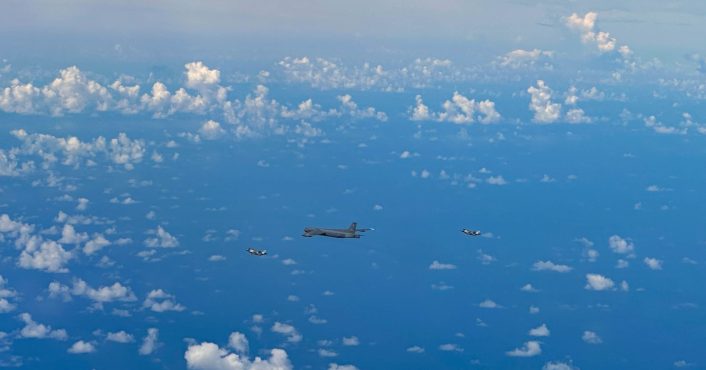

The offset is likely to be operationally acceptable, particularly for missions conducted in relatively low-threat environments such as the Caribbean. In this case, the external Sidewinders give the F-35Bs an immediate self-defense capability against potential aerial threats, while maintaining most of their frontal stealth characteristics: in other words, although the B-52 was a show of force (with the transponder on for all to see), the escort was carried out under conditions that required little observable authentic performance.
U.S. bombers, including the B-52 and B-1, have supported counternarcotics surveillance in the Caribbean for decades, often taking advantage of their range and sensor capabilities to identify and track suspicious vessels. However, flying openly off Venezuela, even over international waters, seems to indicate greater preparation. The B-52, capable of carrying standoff weapons such as the AGM-158 JASSM cruise missile, remains a potent symbol of America’s long-range power projection.
Furthermore, the latest incursion also coincides with a greater concentration of US troops throughout the region. Along with Marine F-35Bs, AC-130J Ghostriders and MQ-9 Reapers they have been operating out of Puerto Rico alongside Navy surface ships and submarines, including the Iwo Jima Amphibious Readiness Group, several Arleigh Burke-class destroyers, a Ticonderoga-class cruiser and the special operations support ship Ocean Trader.
In total, the United States Southern Command currently has about 10,000 troops deployed in the Caribbean. Earlier this month, SOUTHCOM activated a new task force led by elements of the II Marine Expeditionary Force to coordinate expanded counternarcotics and maritime security operations throughout the Western Hemisphere.
Whether the images of the bomber escort were intended solely for transparency purposes or as a deliberate reminder of the United States’ deterrence capability is open to interpretation; What is clear is that the liberation marks one of the most visible demonstrations of American air power in the Caribbean in recent years.
